How can i make an executable of my project in Java? I tried to right click on my project and selected export .


the problem is that the exported jar file wont open when I execute it! Have I missed something? And is there a way to make an .exe executable from my project?
when I execute the jar file in cmd it says :
Exception in thread "main" java.lang.UnsatisfiedLinkError: no lwjgl in java.libr
ary.path
at java.lang.ClassLoader.loadLibrary(Unknown Source)
at java.lang.Runtime.loadLibrary0(Unknown Source)
at java.lang.System.loadLibrary(Unknown Source)
at org.lwjgl.Sys$1.run(Sys.java:73)
at java.security.AccessController.doPrivileged(Native Method)
at org.lwjgl.Sys.doLoadLibrary(Sys.java:66)
at org.lwjgl.Sys.loadLibrary(Sys.java:95)
at org.lwjgl.Sys.<clinit>(Sys.java:112)
at org.lwjgl.opengl.Display.<clinit>(Display.java:135)
at org.newdawn.slick.AppGameContainer$1.run(AppGameContainer.java:39)
at java.security.AccessController.doPrivileged(Native Method)
at org.newdawn.slick.AppGameContainer.<clinit>(AppGameContainer.java:36)
at JavaGame.Game.main(Game.java:34)
